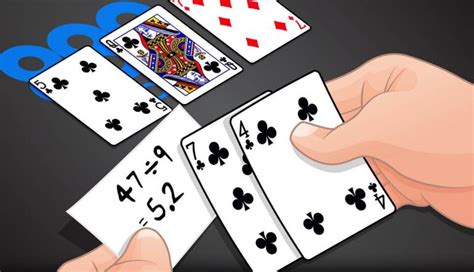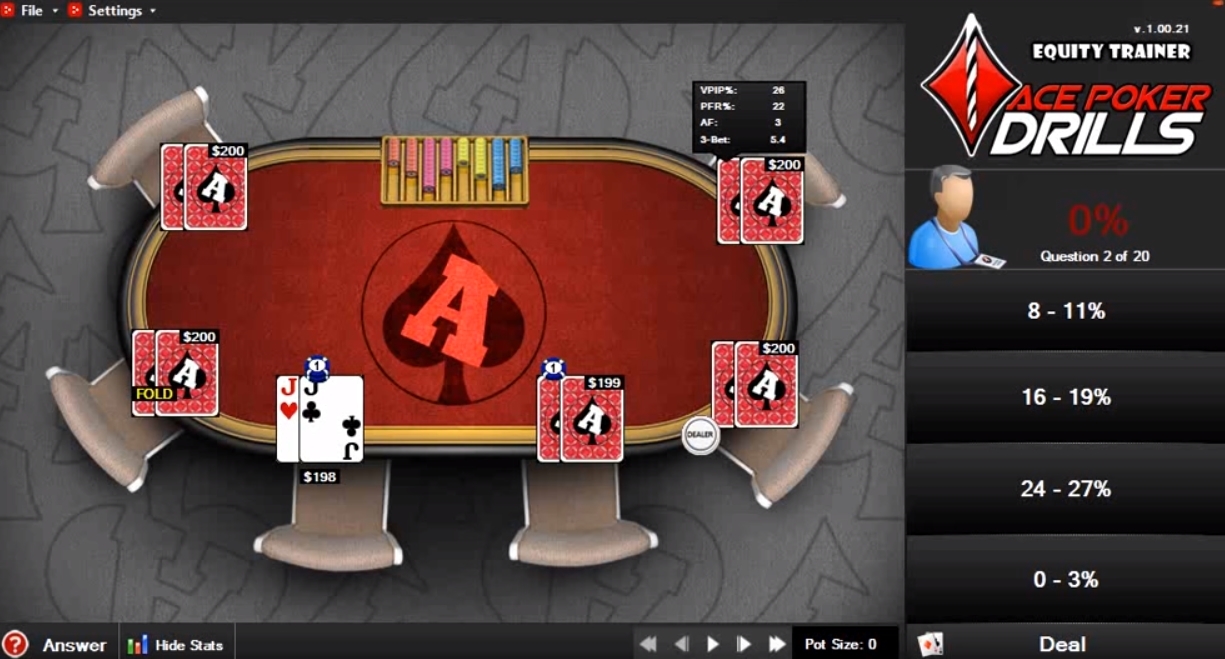How to calculate pot odds in poker: formula, examples and useful software

Poker has millions of fans around the world. The card game attracts people with its unique combination of maths and psychology. It also adds intrigue and variance. Thanks to the latter, a beginner can outplay a professional in a particular hand. However, in the long run, results depend on skill. Calculating pot odds is one of the most important skills of a profitable player. Let's discuss how to calculate pot odds in poker.
What are pot odds in poker?
Pot odds is the ratio of the current pot size to the value of the bet that a player must make in order to stay in contention. Knowing the pot odds helps you decide whether you should continue playing or whether it is better to fold. If the probability of winning a hand exceeds the pot odds, it is worth to equalise the bet. If not, it is better to fold.
The formula for pot odds looks like this:
Pot odds = bet : (pot + bet).
Pot - the money or chips that players have already invested at the time of the hero decision. Bet - the amount of money that needs to be invested to stay in the game. In most cases, this refers to the opponent's bet or rake counterpart. Pot odds are usually calculated to see if it is profitable to respond to an opponent's bet with a flush draw or straight draw. Let's look at an example.
Let's say a player on the turn receives a bet of 70 chips from an opponent. The pot is 170 chips. Pot odds will be: 70 : (70 + 170) = 0.29.
To continue the game, you need to take the pot on the river in 29% of cases. We know from the article "How to count outs in poker" that it is not favourable to call a flush draw or straight draw against a bet at this size. There is a 19.6% probability of a flush draw and a 17.4% probability of a straight draw.
How to estimate the probability to boost the combination?
To decide whether it is profitable to call a bet, you need to compare the pot odds with the chances of improving your hand. In poker, these are called outs. Outs are cards that strengthen a player's hand. Let's look at an example.

Regular training will allow you to calculate pot odds and chances to boost the combination in seconds
The player has 4 cards to a flush, and there are 9 cards left in the deck that will help build the right combination. Where the number 9 comes from: 13 cards of a particular suit minus 4 cards of already known face value. The player's outs are 9 cards. The odds of getting the right card are calculated as follows: multiply the number of outs by 2 to get the probability for the next street. With 9 outs, a player has about 18% chance of catching a flush on the next street. A quick way to learn how to count cards is to read Roy Rounder's little book "Easy Poker Maths". It will also be useful to memorise the most common situations with the help of a probability table.
What software will teach you how to calculate pot odds?
Pot odds is a simple concept, so software developers don't pay much attention to it. Ace Poker Drills will help you master the basic maths. We examined the programme in the review on the site.

The design of Ace Poker Drills is not impressive, but the software copes with its tasks
Among other tools we will highlight:
- PokerStove is a popular poker odds calculator. It allows you to enter specific hands and calculate the percentage of winning a hand.
- Equilab is another powerful tool for analysing hands and odds. It can be used to study pot odds, probability of getting stronger and to run simulations of different situations. For more information about the software, see the comparison material.
- Holdem Manager 3 and PokerTracker 4. Statistic tracking programs that help you analyse hands and calculate the chances of winning in specific situations. Open any hand in the replayer and practice counting pot odds and outs.
- Asian Converter. The software not only converts hand history, but also displays pot odds when playing in the PokerBros, Suprema Poker and PPPoker mobile apps.
For Omaha fans, we recommend NiceHandOmaha. The software shows the odds of strengthening with draw hands. The software's help will simplify the calculations, because in PLO you don't always have time to do everything yourself.
Conclusion
Knowing your pot odds and how to compare them to the odds of improving a hand is an important skill for a successful poker player. It will help you make informed decisions and increase your chances of winning in the long run. As skill increases, the importance of pot odds will decrease due to more complex concepts, but they should always be taken into account.





 Log in
Log in  Register
Register 